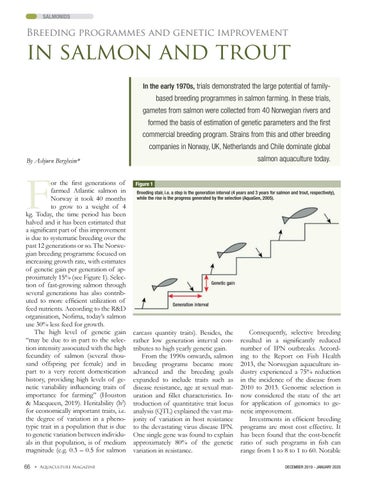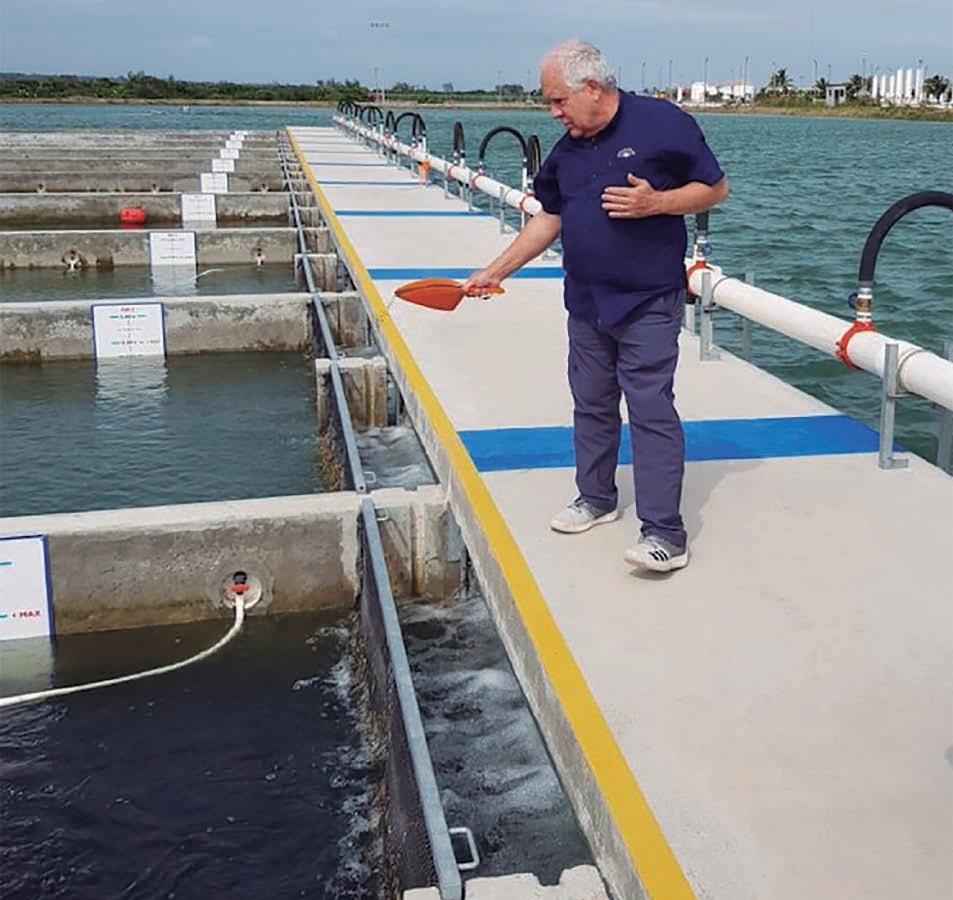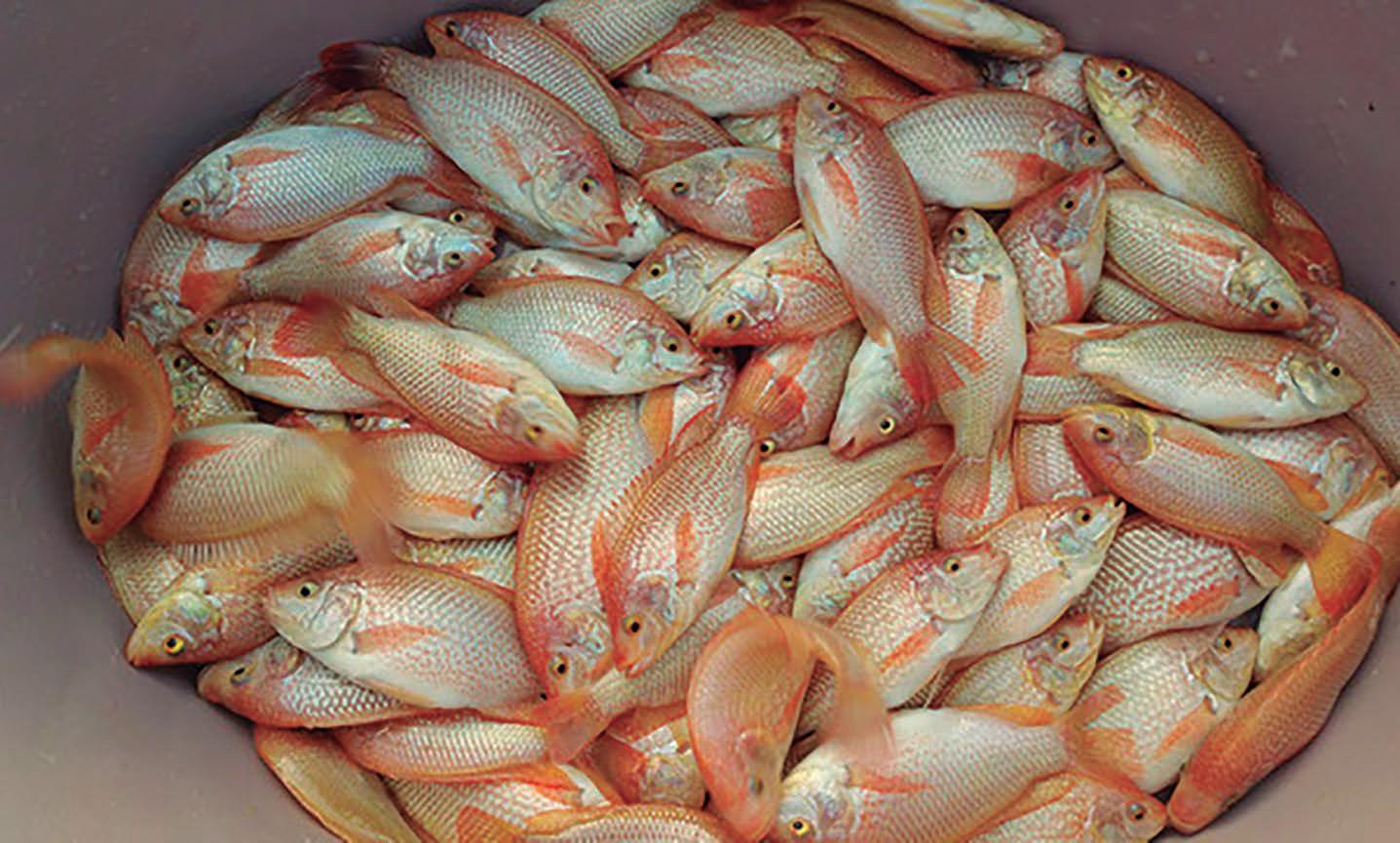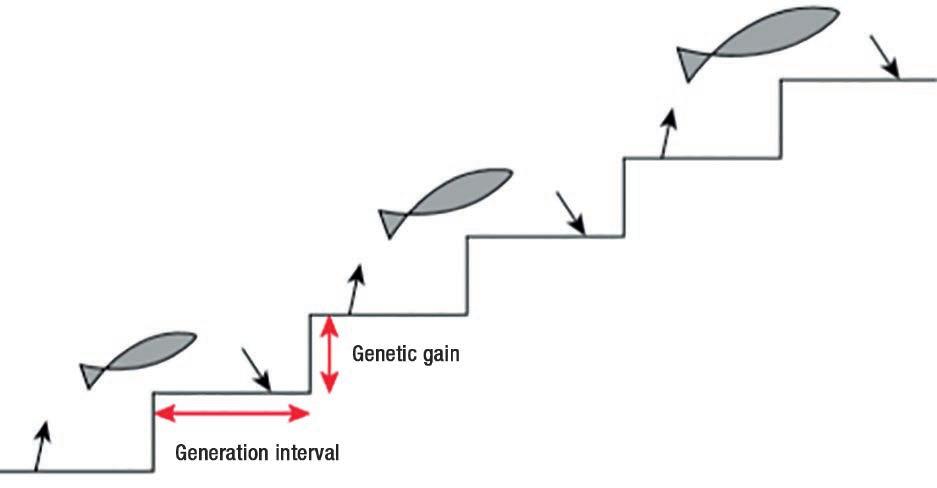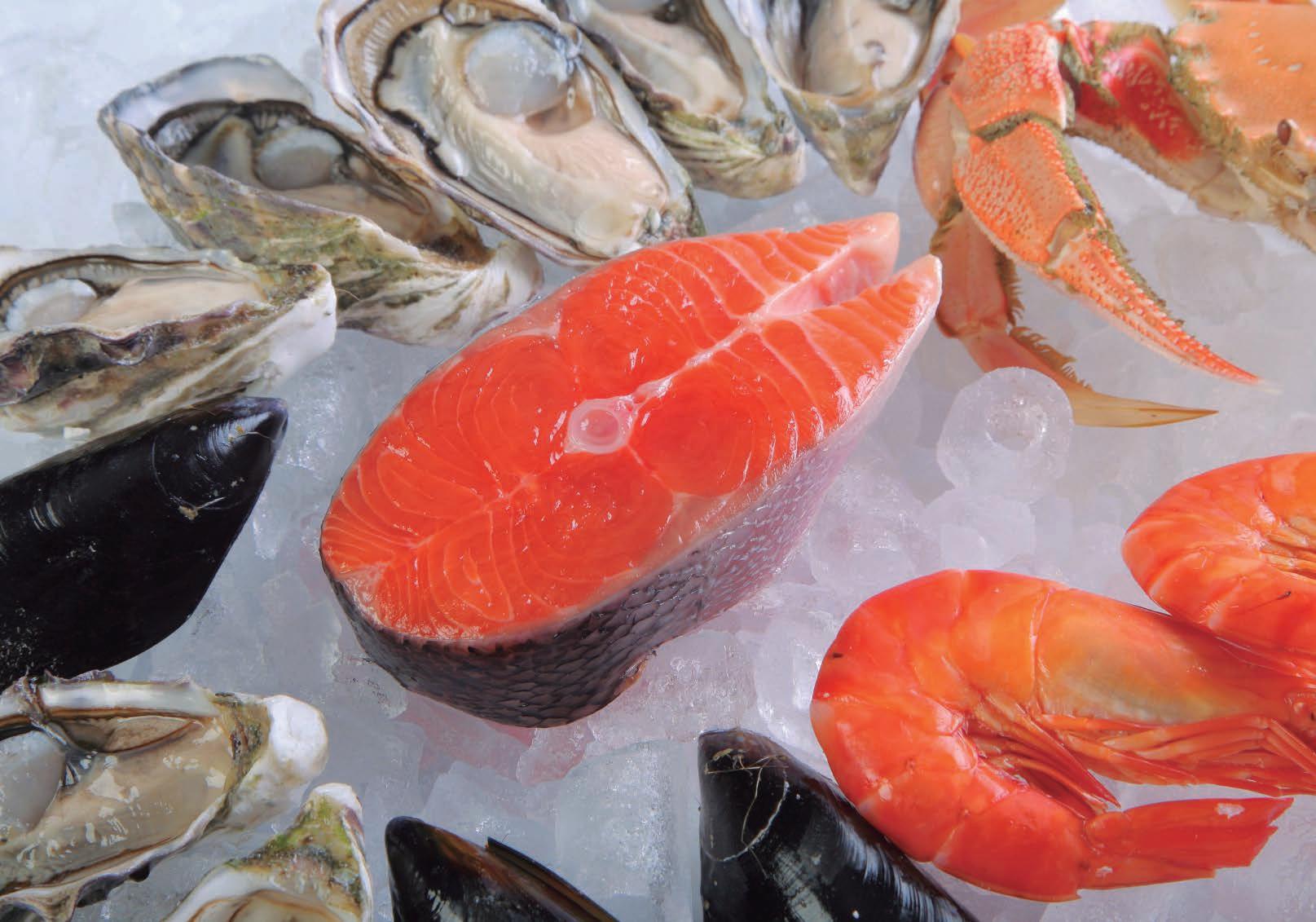SALMONIDS
Breeding programmes and genetic improvement
in salmon and trout In the early 1970s, trials demonstrated the large potential of family-
based breeding programmes in salmon farming. In these trials, gametes from salmon were collected from 40 Norwegian rivers and formed the basis of estimation of genetic parameters and the first commercial breeding program. Strains from this and other breeding companies in Norway, UK, Netherlands and Chile dominate global salmon aquaculture today.
By Asbjørn Bergheim*
F
or the first generations of farmed Atlantic salmon in Norway it took 40 months to grow to a weight of 4 kg. Today, the time period has been halved and it has been estimated that a significant part of this improvement is due to systematic breeding over the past 12 generations or so. The Norwegian breeding programme focused on increasing growth rate, with estimates of genetic gain per generation of approximately 15% (see Figure 1). Selection of fast-growing salmon through several generations has also contributed to more efficient utilization of feed nutrients. According to the R&D organisation, Nofima, today’s salmon use 30% less feed for growth. The high level of genetic gain “may be due to in part to the selection intensity associated with the high fecundity of salmon (several thousand offspring per female) and in part to a very recent domestication history, providing high levels of genetic variability influencing traits of importance for farming” (Houston & Macqueen, 2019). Heritability (h2) for economically important traits, i.e. the degree of variation in a phenotypic trait in a population that is due to genetic variation between individuals in that population, is of medium magnitude (e.g. 0.3 – 0.5 for salmon 66 »
Figure 1 Breeding stair, i.e. a step is the generation interval (4 years and 3 years for salmon and trout, respectively), while the rise is the progress generated by the selection (AquaGen, 2005).
carcass quantity traits). Besides, the rather low generation interval contributes to high yearly genetic gain. From the 1990s onwards, salmon breeding programs became more advanced and the breeding goals expanded to include traits such as disease resistance, age at sexual maturation and fillet characteristics. Introduction of quantitative trait locus analysis (QTL) explained the vast majority of variation in host resistance to the devastating virus disease IPN. One single gene was found to explain approximately 80% of the genetic variation in resistance.
Consequently, selective breeding resulted in a significantly reduced number of IPN outbreaks. According to the Report on Fish Health 2013, the Norwegian aquaculture industry experienced a 75% reduction in the incidence of the disease from 2010 to 2013. Genomic selection is now considered the state of the art for application of genomics to genetic improvement. Investments in efficient breeding programs are most cost effective. It has been found that the cost-benefit ratio of such programs in fish can range from 1 to 8 to 1 to 60. Notable DECEMBER 2019 - JANUARY 2020
